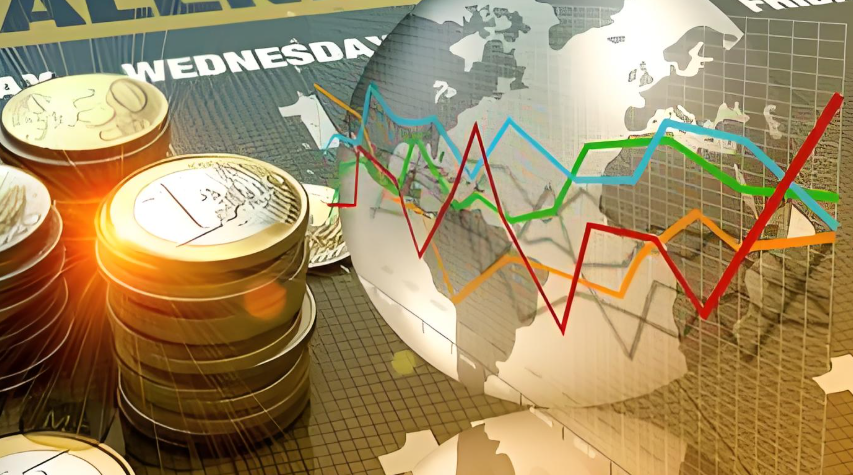Turkey Cuts Interest Rates Significantly!
Advertisements
On a chilly Thursday morning, December 26, the American stock market opened lower, casting a shadow over investors as they awaited the latest unemployment claims data which could illuminate the economic landscapeThis day is particularly noteworthy as it falls right after Christmas, a period traditionally known for the so-called 'Santa Claus Rally,' which often ushers in a positive market sentiment towards the close of the yearHowever, the opening declines marked a cautious approach by traders who remain vigilant regarding economic indicators.
A significant event that transpired on the same day was Turkey's central bank's decision to cut interest rates for the first time in two years, lowering the benchmark rate from an astonishing 50% to 47.5%. This unexpected move caught the market by surprise—investors had braced themselves for a prolonged period of high rates, given Turkey's tumultuous economic history and soaring inflation.
In the U.S., as the major stock indices were slightly down, investors were faced with mixed emotions
The Dow Jones dropped 0.23%, the S&P 500 was down by 0.26%, and the Nasdaq Composite saw a decline of 0.27%. These figures could represent a fleeting blip in an otherwise thriving stock market, which has shown some resilience in the face of economic uncertaintyWith the holiday season breathing down their necks, traders anticipated a lackluster trading session, reflecting a general sense of caution amongst market participants.
Meanwhile, the commodities market displayed some buoyancy as international gold and oil prices experienced an uptickThe interplay between lower consumer demand and rising commodity prices creates a paradox for economists and investors alike, revealing the complexities of today's financial markets amidst a backdrop of geopolitical tensions and domestic economic challenges.
As the new year quickly approaches, trading volume is expected to remain subdued
- Korea's Central Bank Hints at Pausing Rate Cuts
- U.S. Stocks Decline Across the Board
- Embrace Long-Term Perspectives on Returns
- Surge in U.S. Tech Stocks!
- Institutional Research on Industry and Stock Ratings
Yet, there is a palpable sense of optimism as many Asian markets have performed well, leading investors to bet on a strong performance by the U.Smarkets in the final weeks of the yearThe discussion surrounding asset demands indicates a waning interest in safe-haven investments like U.STreasuries, causing their yields to dip as funds flow toward perceived growth opportunities within equities.
In an interesting contrast, many European markets were closed due to the Christmas holiday, while U.Sstocks resumed trading, igniting hopes of a 'Santa Claus Rally.' Historical trends reveal that the U.Smarket generally performs well during this period, with average gains of about 1.3% across the last five trading days of the year and the first two days of the new year since data has been tracked from 1950 onwards.
The so-called 'Christmas bounce' was buoyed significantly by the performance of large tech stocks, a segment of the market that has continued to show impressive resilience and dominance
Analysts have pointed out that institutional portfolios heavily lean toward these tech giants, suggesting that any future buying momentum will likely focus on these stocks as the market looks for stability and growth.
Furthermore, attention was drawn to the U.SDepartment of Labor's report on the same day, which indicated that for the week ending December 14, the number of people continuing to claim unemployment benefits rose to 1.91 millionConversely, there was a slight dip in first-time claims for unemployment benefits, which fell to 219,000 during the week ending December 21. These mixed signals paint a complex picture of the labor market, indicating ongoing challenges for those on unemployment while hinting at potential labor shortages in a recovering economy.
With specific companies making headlines, Honda was a notable performer, experiencing a rise of 3.17% by day’s close, driven by fresh news of a memorandum of understanding with Nissan regarding the commencement of merger talks

This potential merger promises to reshape the automotive landscape, aiming to create a holding company that would become the third-largest automobile manufacturer by global sales—a significant move given the competitive nature of the automotive industry.
The focus on Turkey’s economic developments on this day showcased a shift in global financial narratives, as the Turkish central bank’s interest rate cut was a momentous shift after 22 months of unyielding high ratesThe decision underscored the central bank's response to a slightly stabilizing inflation landscape, with figures from December revealing a moderation that had eluded them for so longThe core inflation metric had shown signs of decline, highlighting the effectiveness of recent policy measures to rein in inflation stemming from consumer demand challenges.
Such drastic measures have been necessary in Turkey, where inflation has surged to alarming levels over the past two years, peaking at a staggering rate of 85% in October 2022, marking the highest in 24 years
This relentless climb has put immense pressure on the populace and the economy, leading to urgent corrective actions from the central bank, which pursued a tough monetary policy since June 2023, lifting interest rates sharply to tackle rampant inflationAfter months of keeping the rates stable at 50%, the ceaseless adjustment emphasizes the sensitivity of Turkey’s economy and the central bank’s commitment to restoring balance.
In retrospect, the announcement regarding Turkey's rate cut sheds light on both the complexities of international finance and the challenges that emerging market economies face todayThe varying trajectories between developed and emerging markets reflect broader global economic dynamics and the interconnections that bind them togetherAs investors and analysts watch how these narratives unfold in the face of year-end adjustments in portfolios, it becomes clear that the convergence of these events reveals much about the evolving landscape of global finance.
Post Comment